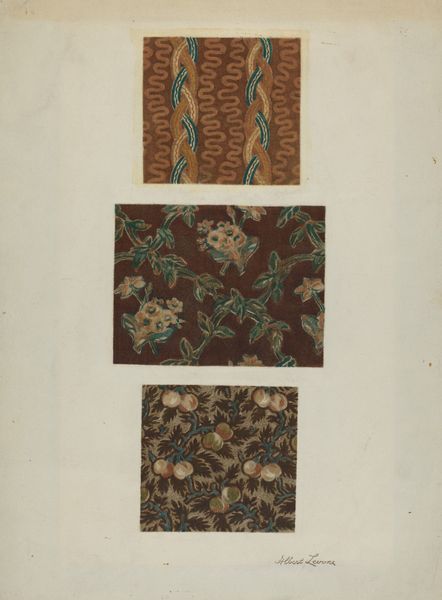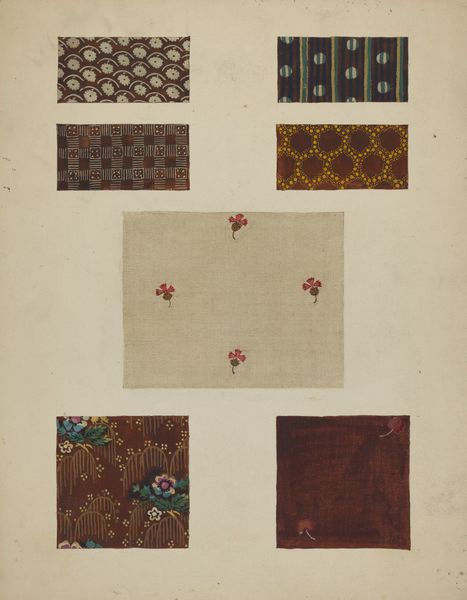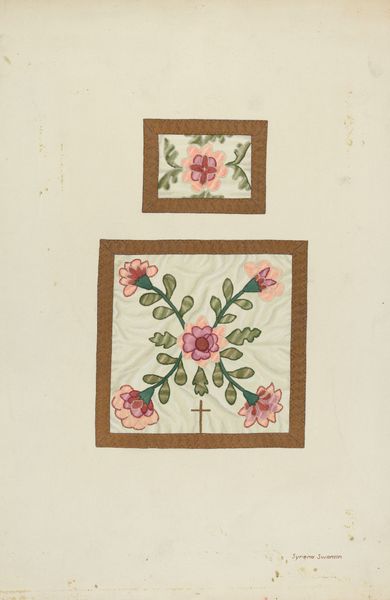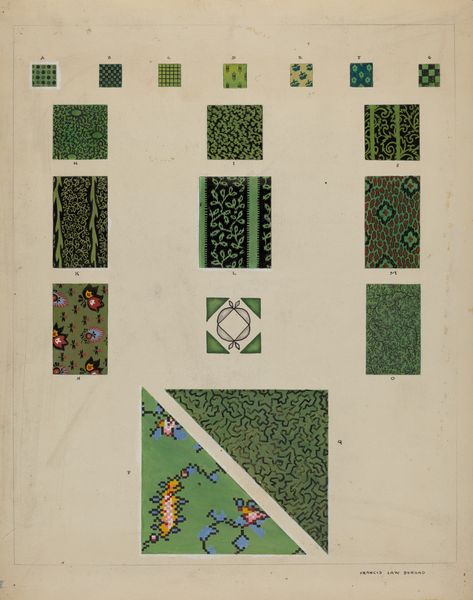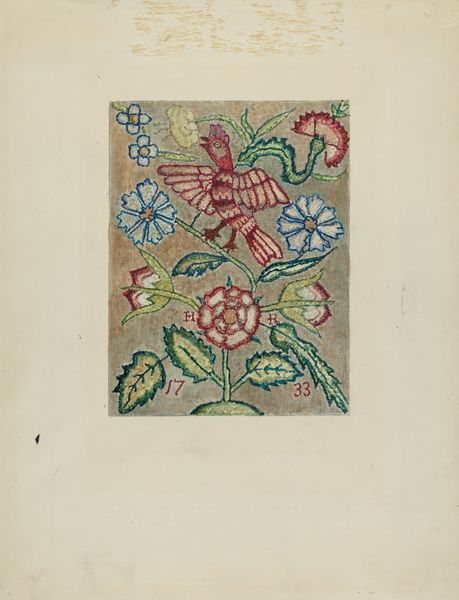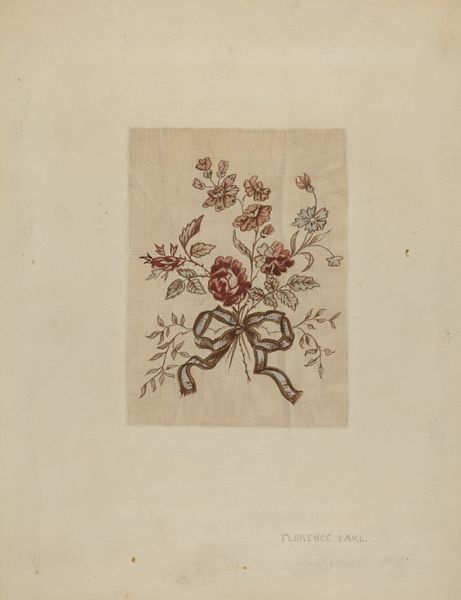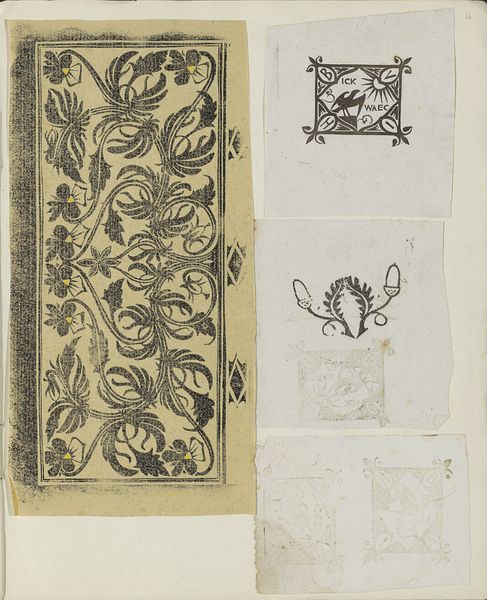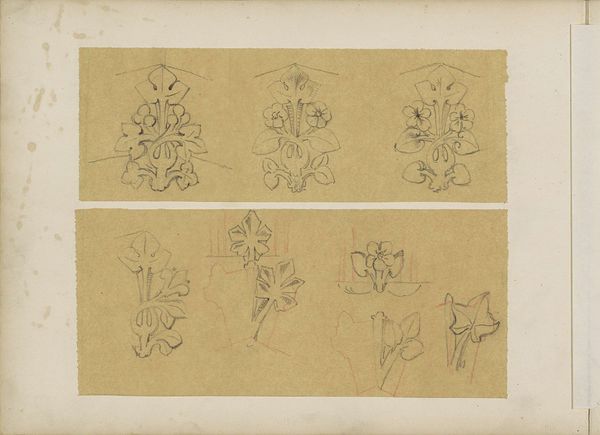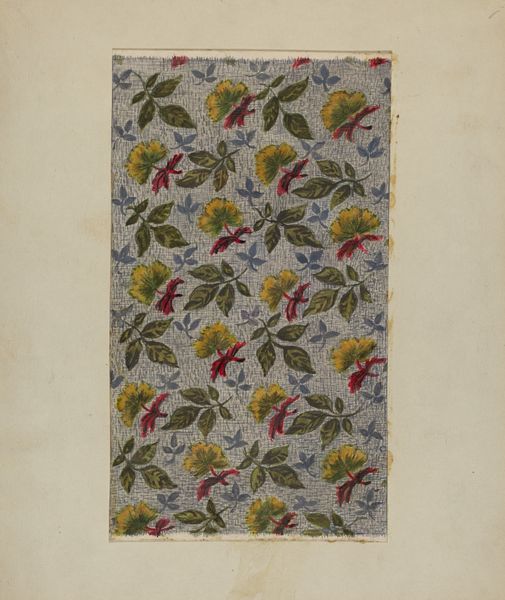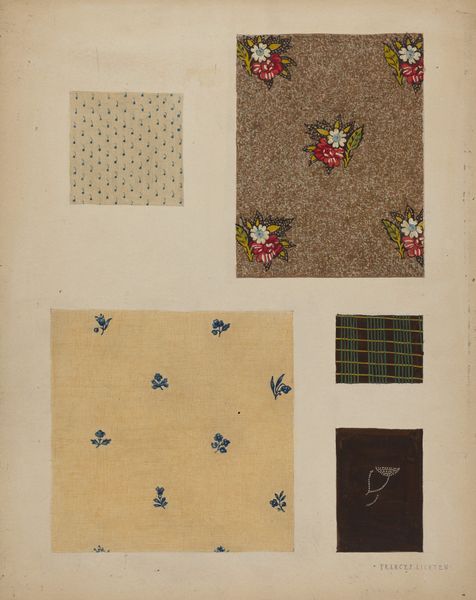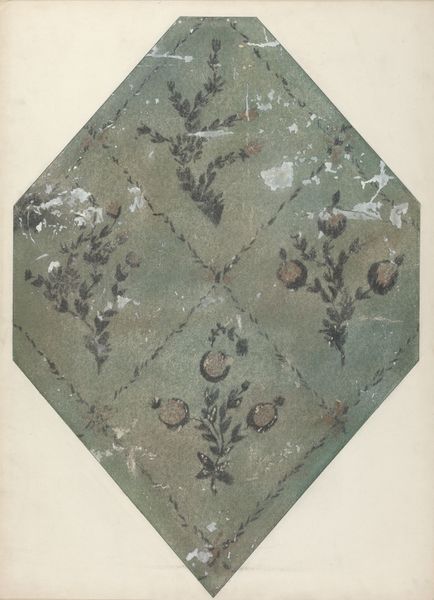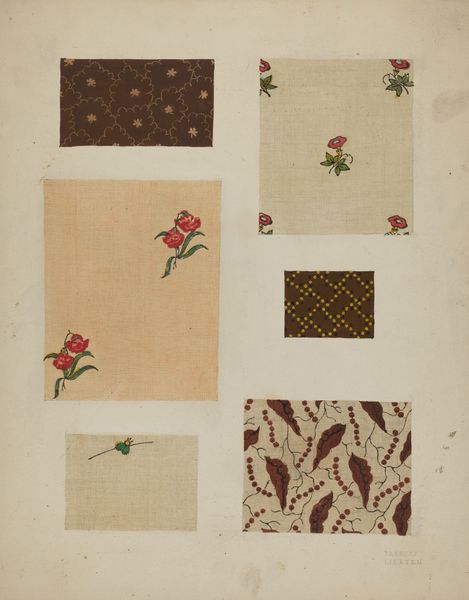
drawing, paper, watercolor
#
drawing
#
water colours
#
paper
#
watercolor
#
folk-art
#
watercolor
Dimensions: overall: 35.6 x 28 cm (14 x 11 in.)
Copyright: National Gallery of Art: CC0 1.0
Curator: Immediately, the somber, muted tones of brown make me think of the economic struggles prevalent when it was made. Editor: Today we’re looking at "Materials from Patchwork Bedspread," a watercolor and graphite study on paper created around 1936 by Frances Lichten. Curator: The work is arranged with meticulous precision, each swatch a testament to craftsmanship. How the design highlights a certain visual repetition speaks to the labor that might have been put in place when constructing quilts, especially the use of repurposed textiles in that era. Editor: I notice the way she carefully renders each pattern, acknowledging both its unique properties, and how the sameness speaks to the standardization of quilt design in mainstream folk art circles. Consider the ways that this craft became a marker of feminine identity, an arena for creative self-expression but also subject to cultural expectations. Curator: Yes, but let’s also think about it purely formally. Watercolor gives these swatches a unique feel of being at the precipice of being washed out, reused, repurposed as are quilts by their very definition and materials! The materiality communicates the beauty but also its inherent temporality. Editor: Certainly. And these swatches provide insight into the social status of those who may have used quilts. Was the material hand-dyed? Was the fabric from pre-used textiles? Perhaps this was made from store-bought, mass-produced patterns and textiles for a family able to purchase their fabrics from big retailers? Quilts aren't just made of textiles; they're made of cultural histories. Curator: And the very act of Lichten rendering it in watercolor pulls it out of being functional into the high art world. A simple record of a craft becomes elevated by technique, a material transformation. Editor: Ultimately, Lichten urges us to consider how ordinary materials are inextricably intertwined with the lives, labor, and memories of individuals. Curator: What begins as a record of folk materials is transmuted through medium and execution into something else, an inquiry into labor, materials and our very way of constructing visual experience and meaning.
Comments
No comments
Be the first to comment and join the conversation on the ultimate creative platform.
